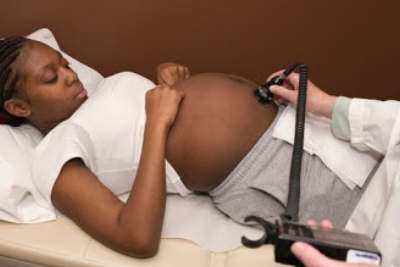Can You Get Pregnant With A Blocked Fallopian Tube?
Can You Get Pregnant With A Blocked Fallopian Tube?

What Are Blocked Fallopian Tubes?
To understand what blocked fallopian tubes are, you need to know what a fallopian tube is. The fallopian tubes are two thin tubes, one on each side of the uterus, which help lead the mature egg from the ovaries to the uterus. When an obstruction prevents the egg from traveling down the tube, the woman has a blocked fallopian tube.
It can occur on one or both sides. This is also known as tubal factor infertility, and is the cause of infertility in 40% of infertile women.
How Do Blocked Fallopian Tubes Cause Infertility?
Each month, when ovulation occurs, an egg is released from one of the ovaries. The egg travels from the ovary, through the tubes, and into the uterus. The sperm also need to swim their way from the cervix, through the uterus, and through the fallopian tubes to get the egg. Fertilization usually takes place while the egg is traveling through the tube. If one or both fallopian tubes are blocked, the egg cannot reach the uterus, and the sperm cannot reach the egg, preventing fertilization and pregnancy.
It’s also possible for the tube not to be blocked totally, but only partially. This can increase the risk of a tubal pregnancy, or ectopic pregnancy.
Can You Get Pregnant With A Blocked Fallopian Tube?
If only one fallopian tube is blocked, but the other is clear, it may still be possible to achieve pregnancy. It depends on how well the ovaries are functioning, and also what caused the blocked tube in the first place.
What Are The Symptoms Of Blocked Fallopian Tubes?
Blocked fallopian tubes rarely cause symptoms. A specific kind of blocked fallopian tube, called hydrosalpinx, may cause lower abdominal pain and unusual vaginal discharge, but not every woman will have these symptoms.
However, some of the causes of blocked fallopian tubes might lead to hints of a problem. For example, endometriosis and pelvic inflammatory disease may cause painful menstruation and painful sexual intercourse. But these symptoms don’t necessarily point to blocked tubes.
What Causes Blocked Fallopian Tubes?
The most common cause of blocked fallopian tubes is pelvic inflammatory disease (PID). PID is the result of a sexually transmitting disease, but not all pelvic infections are related to STDs. Also, even if PID is no longer present, a history of PID or pelvic infection increases the risk of blocked tubes.
Other potential causes of blocked fallopian tubes: current or history of an STD infection, specifically Chlamydia or Gonorrhea; history of uterine infection caused by an abortion or miscarriage; history of a ruptured appendix; history of abdominal surgery; previous ectopic pregnancy; prior surgery involving the fallopian tubes; Endometriosis.
How Are Blocked Tubes Diagnosed?
Blocked tubes are usually diagnosed with a specialized x-ray, called a hysterosalpingogram, or HSG. This test involves placing a dye through the cervix, using a tiny tube. Once the dye has been given, the doctor will take x-rays of your pelvic area. If all is normal, the dye will go through the uterus, through the tubes, and spill out around the ovaries and into the pelvic cavity. If the dye doesn’t get through the tubes, then you may have a blocked fallopian tube.
It’s important to know that 15% of women have a “false positive,” where the dye doesn’t get past the uterus and into the tube. The blockage appears to be right where the fallopian tube and uterus meet. If this happens, the doctor may repeat the test another time, or order a different test to confirm.
Other tests that may be ordered include ultrasound, exploratory laparoscopic surgery, or hysteroscopy (where they take a thin camera and place it through your cervix, to look at your uterus). Blood work to check for the presence of Chlamydia antibodies (which would imply previous or current infection) may also be ordered.
What Are The Potential Treatments For Blocked Tubes?
If you have one open tube, and are otherwise healthy, you might be able to get pregnant without too much help. Your doctor may give you fertility drugs to increase the chances of ovulating on the side with the open tube. This is not an option, however, if both tubes are blocked.
In some cases, laparoscopic surgery can open blocked tubes or remove scar tissue that is causing problems. Unfortunately, this treatment doesn’t always work. The chance of success depends on how old you are (the younger, the better), how bad and where the blockage is, and the cause of blockage. If just a few adhesions are between the tubes and ovaries, then your chances of getting pregnant after surgery are good. If you have a blocked tube that is otherwise healthy, you have a 20% to 40% chance of getting pregnant after surgery. But if thick, multiple adhesions and scaring are between your tubes and ovaries, or if you have been diagnosed with hydrosalpinx, surgery may not be a good option for you. Also, if there are any male infertility issues, you might want to skip surgery. In these cases, IVF treatment is your best bet.
Also important to note is that your risk of ectopic pregnancy is higher after surgery to treat tubal blockage. Your doctor should closely monitor you, if you do get pregnant.



